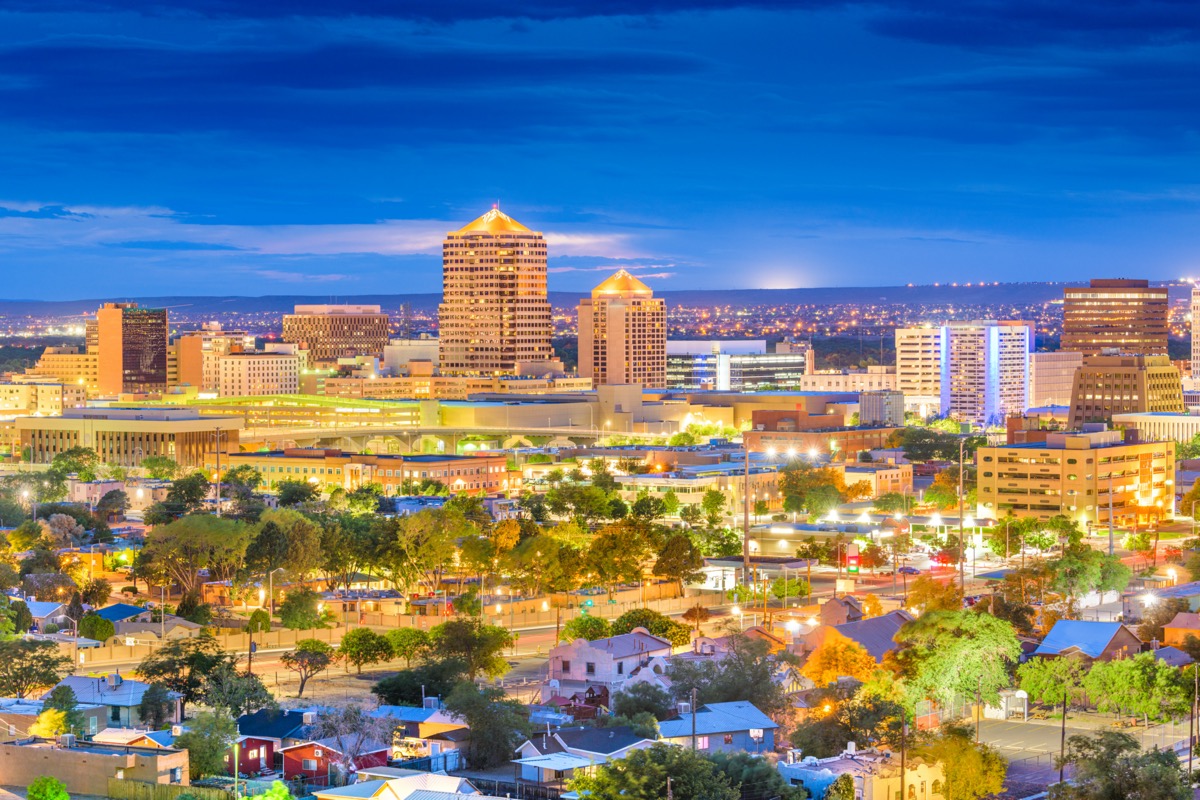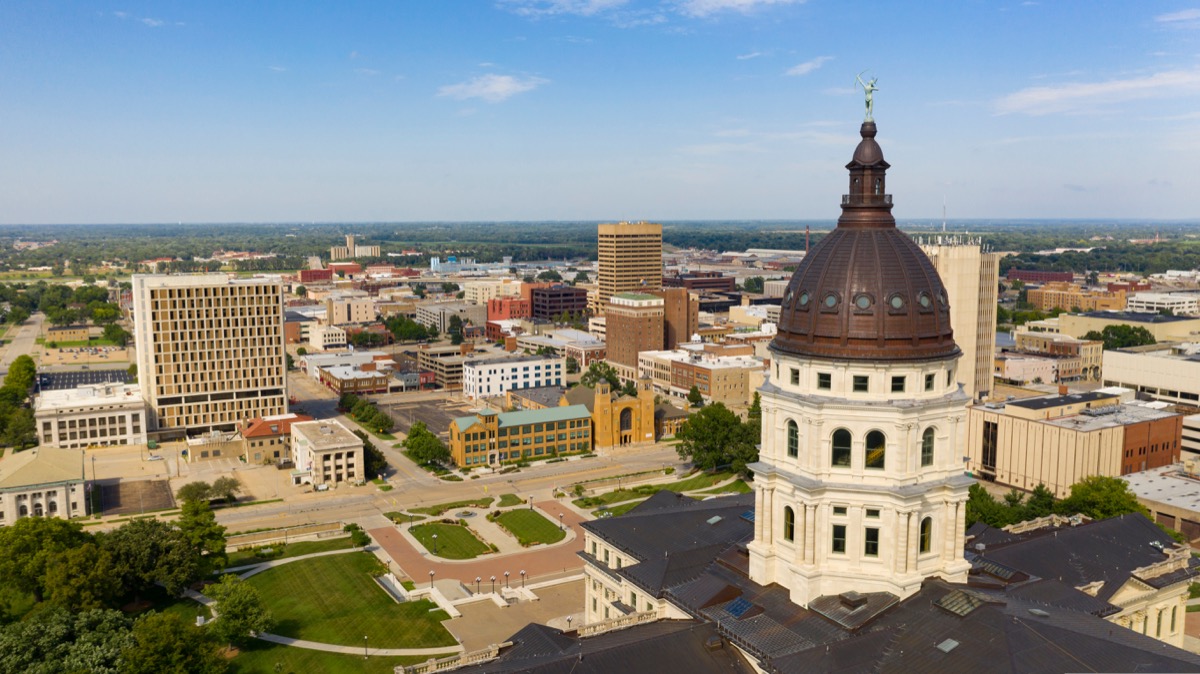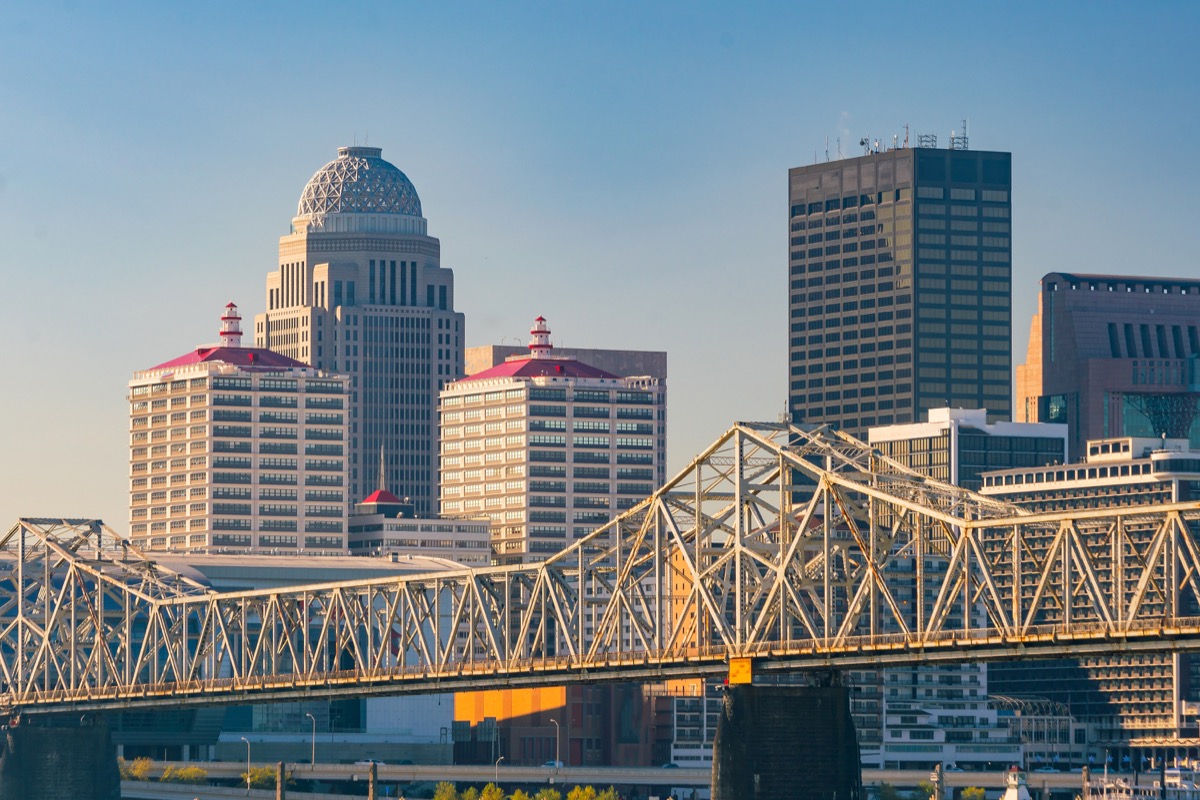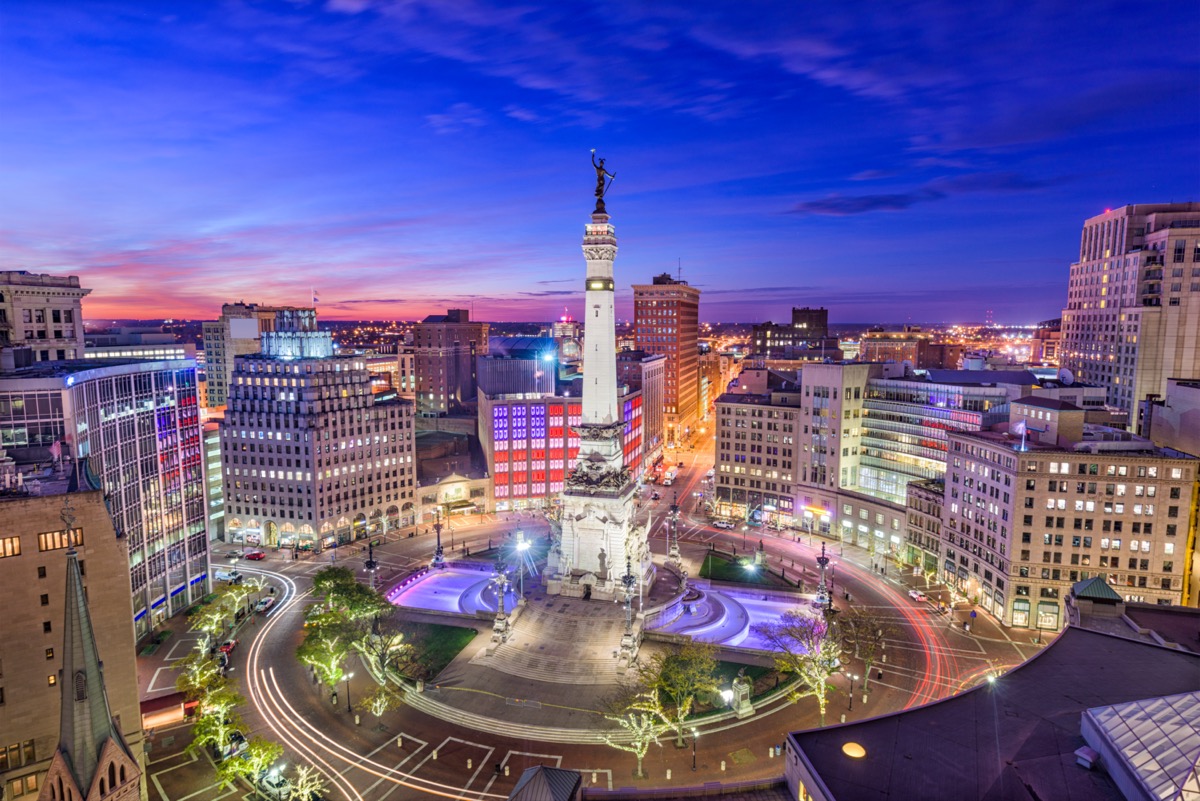After weeks of leveling out between 70,000 and 75,000 cases, the national daily COVID infection average jumped back above 82,000, according to data from Johns Hopkins University analyzed by CNBC. The sudden spike represents an 11 percent increase overall from last week. In a Nov. 15 interview hosted by the Bipartisan Policy Center, chief White House COVID adviser Anthony Fauci, MD, acknowledged that the steady decline experienced since the worst of the Delta surge tapered off near the end of the summer had stalled. “The only thing that’s a little bit disconcerting is that we’re beginning to plateau,” he said, per CNBC. “In other words, the deceleration of cases is now plateaued, and in some areas of the country, we’re starting to see a bit of an uptick.” Other top experts have warned that the holiday season could strengthen the sudden surge. During an appearance on CBS’ Face the Nation on Nov. 14, Scott Gottlieb, MD, former commissioner of the U.S. Food and Drug Administration (FDA), pointed out that certain regions were already seeing new waves of cases in the weeks leading up to Thanksgiving. “We’re going to see a post-holiday spike, there’s no question about that,” Gottlieb warned. Read on to see which states have experienced COVID surges of 30 percent or more over the past week as of Nov. 16, according to data from The Washington Post. RELATED: This Is When the Pandemic Will Finally Be Over, Former FDA Head Now Says.
New cases in the last seven days: 28 cases per 100,000 people Percent increase in the last seven days: 30 percent
Over the past 14 days, New York has seen a statewide increase in its daily average COVID cases of 42 percent, reaching 5,519 on Nov. 15, according to data from The New York Times. Fortunately, hospitalizations and deaths have not followed suit, seeing drops of 12 and four percent over the same period, respectively.ae0fcc31ae342fd3a1346ebb1f342fcb “Although hospitalizations remain low right now, we are seeing an uptick in recent days,” New York City Health Commissioner David Chokshi, MD, said during a press conference on Nov. 15. “We had anticipated that this might occur as the weather gets cooler and people spend more time indoors, but compared to this time last year, we have many more tools to fight COVID-19 and work to keep a winter wave at bay.”
New cases in the last seven days: 70 cases per 100,000 people Percent increase in the last seven days: 30 percent
The COVID surge that’s been affecting Minnesota for weeks is carrying on, with the past week seeing a rise of 30 percent in the average case count. According to state health officials, unvaccinated patients made up 70 percent of the 709 people with COVID-19 who were admitted to hospitals between Oct. 10 and 16, The Star Tribune reports. “We are in the middle of a COVID blizzard right now in Minnesota, so that’s a challenge,” Kris Ehresmann, state infectious disease director for Minnesota, said during a press conference on Nov. 15. “If we could get people to consider implementing the layered mitigation, if we could get more people vaccinated, and if people continue to seek out boosters, that will make a difference.” RELATED: This Is the “Bad News” About COVID Right Now, Virus Expert Warns.
New cases in the last seven days: 72 cases per 100,000 people Percent increase in the last seven days: 47 percent
Michigan is one of a handful of states that have been struggling through a persistent COVID surge. According to state health officials, the 7-day average for daily cases was 6,171 on Nov. 15, making it the highest recorded since April. Michigan has also seen an increase in hospitalizations and reported a positive test rate of 15.62 percent on Nov. 12.
New cases in the last seven days: 16 cases per 100,000 people Percent increase in the last seven days: 61 percent
In a press release on Nov. 15, Connecticut Gov. Ned Lamont announced that the state had added 2,179 COVID-19 cases over the weekend and was seeing a positive test rate of 2.89 percent. Overall, the state has seen an eight percent increase in hospitalizations and a 10 percent increase in deaths over the past two weeks, according to data from The Times. For more health news sent right to your inbox, sign up for our daily newsletter.
New cases in the last seven days: 43 cases per 100,000 people Percent increase in the last seven days: 63 percent
Indiana has recently seen a sustained rise in COVID cases that is showing no signs of stopping. According to state health data, the latest seven-day case average of 2,401 marks a 50.9 percent increase over just three weeks ago. Positive test rates have also rebounded, spiking back up to a statewide average of 8.8 percent on Nov. 15 from 7.3 percent on Oct. 25.
New cases in the last seven days: 23 cases per 100,000 people Percent increase in the last seven days: 67 percent
As of Nov. 16, the COVID surge in Tennessee was the worst reported by any state, with a 67 percent increase over the past week to 23 new daily cases per 100,000 people. The most recent spike comes just days after Gov. Bill Lee signed a bill into law that will ban private businesses from enforcing vaccine mandates and prohibit schools from enacting mask mandates. RELATED: More Than 50 Percent of People Who Get COVID Have This in Common, Study Says.
title: “These 6 States Are Seeing The Worst Covid Surges Best Life” ShowToc: true date: “2022-12-15” author: “Melvin Nash”
According to the most recent data from Johns Hopkins University, the daily average of reported cases in the U.S. reached 72,000 last week, marking a 58 percent decrease since the summer surge’s peak of 172,500 average daily cases on Sept. 13, CNBC reports. But the good news also comes as a weeks-long steady decline was snapped by a sudden nine percent rise in the national daily average of new COVID cases over the past seven days, according to The Washington Post. Over the past week, global experts have pointed to warning signs that the pandemic may be roaring back as cases began to rise again globally for the first time in two months. A four percent increase saw nearly 3 million new cases reported worldwide, with Europe accounting for about 57 percent of the surge. This led one expert to warn of what this could mean for the coming weeks stateside. “A lot of times, what we see in Europe is sort of the harbinger of what we see in the U.S.,” Barbara Taylor, MD, an assistant dean and associate professor of infectious diseases at the University of Texas Health Science Center at San Antonio, told CNBC. “And so it concerns me that cases there are on the rise.” Taylor also pointed out that the virus may also not have thrown its final hurdle at us. “The final potential threat or thing that worries us all is the ability of COVID to change and mutate,” she warned, adding that the arrival of a new highly contagious variant “could change everything about the pandemic over the next six months.” Read on to see which states have experienced COVID surges of 15 percent or more over the past week as of Nov. 2, according to data from The Washington Post. RELATED: If You Notice This at a Restaurant, Don’t Eat There, Virus Experts Warn.
New cases in the last seven days: 41 cases per 100,000 people Percent increase in the last seven days: 17 percent
After a brief decline and plateau, Arizona has struggled with a renewed surge in infections in recent weeks. Over the past 14 days, newly reported cases have seen an 81 percent increase, hospitalizations have jumped four percent, and deaths have skyrocketed 126 percent, according to data from The New York Times.
New cases in the last seven days: 50 cases per 100,000 people Percent increase in the last seven days: 17 percent
Colorado is still struggling to deal with the effects of an ongoing surge that has plagued the state for months. On Oct. 31, Gov. Jared Polis signed two executive orders to help ease the strain the virus has put on the state’s healthcare system, including one which will allow hospitals to refuse patients and redirect them to other facilities, Colorado Public Radio reports. “I am very concerned that we are going to exceed capacity and what dictates capacity is going to be the number of safely staffed beds,” Anuj Mehta, MD, a pulmonologist with National Jewish Health and Denver Health who serves on the Governor’s Expert Emergency Epidemic Response Committee, told Colorado Public Radio. “It’s no longer a question of ventilators. It’s a question of safely staffed beds. If you typically have one nurse for two ICU beds, and now you’re asking that one nurse to care for four ICU patients, that’s not safe anymore.” RELATED: Dr. Fauci Says He Would Take This COVID Precaution “In a Second”.
New cases in the last seven days: 45 cases per 100,000 people Percent increase in the last seven days: 19 percent
After reaching a new peak in September, New Mexico has struggled with plateauing cases at a relatively high rate for weeks. But over the weekend, state health data showed that new daily cases had passed the 1,000 mark once again as new infections began to creep up. “This is a hard time,” Christine Ross, MD, state epidemiologist for New Mexico, said during a press conference on Oct. 27. “We are all struggling. We would like to put this pandemic behind us and in the past, but we’re not there yet. We all continue to struggle with this global pandemic, but we’re thrilled that we do have effective countermeasures, and certainly, vaccination is our number one countermeasure.”
New cases in the last seven days: 46 cases per 100,000 people Percent increase in the last seven days: 56 percent
Despite struggling with technical issues affecting the state’s reporting system, amended data shows New Hampshire has witnessed a rise in COVID numbers in recent weeks. New cases have risen 11 percent in the state over the past 14 days, while hospitalizations have jumped 19 percent during the same period, according to data from The Times. RELATED: 60 Percent of Virus Experts Wouldn’t Do These 6 Things Right Now, Data Shows.
New cases in the last seven days: 63 cases per 100,000 people Percent increase in the last seven days: 65 percent
Minnesota is still struggling with an ongoing surge that has recently seen another spike. On Nov. 1, state health officials reported 2,857 new cases of COVID-19 in the state, bringing the total to 789,800 since the start of the pandemic.ae0fcc31ae342fd3a1346ebb1f342fcb For more COVID news and updates sent straight to your inbox, sign up for our daily newsletter.
New cases in the last seven days: 22 cases per 100,000 people Percent increase in the last seven days: 72 percent
Despite having one of the lowest transmission rates in the U.S. for weeks, California has recently seen an uptick in cases, spiking 54 percent in the past 14 days, according to data from The New York Times. Now, some local officials are warning that the state could become stuck in a dangerously long plateau without the proper precautions. “As the winter months come up and as all of these holidays come up, more people are going to gather, and more people are going to be indoors,” Regina Chinsio-Kwong, MD, an Orange County deputy health officer, told the Los Angeles Times. “So if we don’t take precaution until everybody gets some sort of immunity, we are still at risk of continuing to have higher numbers in case rates, similar to the United Kingdom.” RELATED: Dr. Fauci Just Shared a Sobering Prediction About Ending the Pandemic.
title: “These 6 States Are Seeing The Worst Covid Surges Best Life” ShowToc: true date: “2022-11-23” author: “Charlene Prince”
Over the past seven days, the national daily average of newly reported infections per 100,000 people has dropped 17 percent to 21, according to The Washington Post as of Oct. 26. But while some experts have credited the expansion of vaccines with recent success against the virus, others still warned that officials should be careful not to repeat some of the mistakes they have made in the past. “We have highly effective vaccines—which, yes, the new [Delta variant] impacts, and we may need to get boosters to protect people who are vulnerable and high-risk—but we have made big strides compared to this time last year, going into colder weather, at least in the northern hemisphere,” Nahid Bhadelia, MD, director of Boston University’s Center for Emerging Infectious Diseases Policy and Research, told the Associated Press. But, she later added: “We have done this every single time—starting with Memorial Day last year—where we just open up too fast, and I think this time, maybe we should be a bit more cautious.” To keep the pandemic in check, she recommended keeping requirements in place for masks in public spaces and mandating proof of vaccination or a negative COVID test to attend events. Read on to see which states have experienced COVID surges of 10 percent or more over the past week as of Oct. 26, according to data from The Washington Post. RELATED: A Virus Expert Says She Still Wouldn’t Go Here—Even With a Booster.
New cases in the last seven days: 22 cases per 100,000 people Percent increase in the last seven days: 10 percent
After seeing weeks of relatively steady decline, Nevada has seen its daily average rise over the past week. And while the increase in new infections and hospitalizations in Clark County—the state’s most populous—appeared to be already flattening out, numbers statewide are still above the threshold set by health officials for removing mask mandates.
New cases in the last seven days: 43 cases per 100,000 people Percent increase in the last seven days: 10 percent
Colorado has continued to struggle with an ongoing COVID surge that did not break after summer ended. Hospitalizations, in particular, have put a heavy strain on the local healthcare system. “I think we’re certainly at our highest capacity levels that we’ve seen. Our hospitals are stretched incredibly thin,” Cara Welch, a spokeswoman with the Colorado Hospital Association, told Colorado Public Radio. “We’re having to pull all of the levers available to us, so we have emergency departments going on divert [which means turning away ambulances as emergency rooms fill]. We’re turning down out-of-state transfers.” Another expert cautioned that the worst may not even be over yet for the state. “The heartburn, obviously, that I’m feeling is that we’re inching closer and closer to Thanksgiving. And the fact we are plateaued or continuing to increase means we’re going to be in for a rough several months,” Michelle Barron, MD, the senior medical director of infection control and prevention for UCHealth, told Colorado Public Radio. RELATED: Dr. Fauci Just Gave This Essential Update on the Next COVID Variants.
New cases in the last seven days: 138 cases per 100,000 people Percent increase in the last seven days: 12 percent
Over the past month, an ongoing surge in Alaska has kept it near the top of the list of states in terms of new cases per capita. Health data revealed that September was the deadliest month of the entire pandemic for the state, as well as breaking case number records, which have carried over through this month, Anchorage Daily News reports. “September was a bad month, and unfortunately, I think people can expect to the next couple of months are going to have pretty high death numbers compared to what we’re used to,” Benjamin Westley, MD, a doctor who treats COVID-19 patients in Anchorage, told Anchorage Daily News. “There’s no way to avoid death when this many people that are unvaccinated are getting COVID. Clearly, our death rate amongst other states is going to rise. You can’t have more COVID than any other state for three or four weeks on end without expecting the deaths to go up.”
New cases in the last seven days: 30 cases per 100,000 people Percent increase in the last seven days: 14 percent
After weeks of steady decline, Oregon reported numbers over the past week showing a sudden increase in newly reported COVID cases across the state. Some experts worry that fatigue with precautions such as mask ordinances could slow the decrease in cases as colder weather sets back in. According to Peter Graven, a data scientist from Oregon Health & Science University (OHSU), riskier behavior such as dining at restaurants or visiting indoors with people from outside the household are on the rise and could be to blame for the recent uptick. RELATED: If You Notice This at a Restaurant, Don’t Eat There, Virus Experts Warn.
New cases in the last seven days: 34 cases per 100,000 people Percent increase in the last seven days: 17 percent
As cases continue to rise in pockets of New England, Maine is still battling an ongoing surge within its borders. A sustained high level of hospitalizations has also put a heavy strain on the local healthcare system. On Oct. 23, Maine also became the third-to-last state to cross the 100,000 case threshold, leaving Vermont and Hawaii as the last to pass that mark.ae0fcc31ae342fd3a1346ebb1f342fcb For more COVID news and updates sent straight to your inbox, sign up for our daily newsletter.
New cases in the last seven days: 35 cases per 100,000 people Percent increase in the last seven days: 35 percent
After seeing cases plateau and slightly dip over September and October, COVID-19 cases have come bounding back in Arizona. In particular, deaths from the virus in the state have seen a drastic surge, with the seven-day rolling average of daily new deaths per 100,000 people spiking by 138 percent last week. “It’s bad,” Will Humble, executive director of Arizona’s Public Health Association, told The Post. RELATED: Dr. Fauci Just Shared a Sobering Prediction About Ending the Pandemic.
title: “These 6 States Are Seeing The Worst Covid Surges Best Life” ShowToc: true date: “2023-01-12” author: “Paul Thomas”
The national seven-day average of newly reported coronavirus cases maintained its downward trajectory, decreasing 10 percent since last week to 15 per 100,000 people, according to data from The Post as of May 4. But some states saw their own figures defy the national trend, including six that saw a significant increase of 10 percent or more. The new data comes as scientists and officials are becoming less confident that the “herd immunity” required to eradicate the virus will ever be reached, thanks to flagging public interest and vaccine inequity. “The virus is unlikely to go away,” Rustom Antia, an evolutionary biologist at Emory University in Atlanta, told The New York Times. “But we want to do all we can to check that it’s likely to become a mild infection.” During an interview on CBS’s Face the Nation on May 2, Scott Gottlieb, MD, former FDA commissioner, maintained a positive outlook on the pandemic’s trajectory, calling the vaccine’s rollout “a monumental achievement” that will continue through the summer, even if it’s at a slower pace. “Hospitalizations are a pretty good indicator of where the direction is heading, and they’re coming down as well. So, I think these gains are pretty sustainable at this point,” he predicted. Read on to find out which states have seen COVID case surges of more than 10 percent in the past seven days, according to May 4 data from The Washington Post. And for more on what the next phase of the pandemic might look like, America Will “Feel Close to Normal” by This Exact Date, COVID Expert Says. New cases in last seven days per 100,000 people: 7 Percent change in daily cases in last seven days: Up 11 percent New cases in last seven days per 100,000 people: 10ae0fcc31ae342fd3a1346ebb1f342fcb Percent change in daily cases in last seven days: Up 12 percent And for more on where you shouldn’t be going post-shots, The CDC Says to “Avoid” Going Here, Even If You’re Vaccinated. New cases in last seven days per 100,000 people: 9 Percent change in daily cases in last seven days: Up 13 percent New cases in last seven days per 100,000 people: 14 Percent change in daily cases in last seven days: Up 18 percent And for more on post-immunization risk factors, You’re More Likely to Get COVID After Vaccination If You’re Over This Age. New cases in last seven days per 100,000 people: 17 Percent change in daily cases in last seven days: Up 19 percent New cases in last seven days per 100,000 people: 7 Percent change in daily cases in last seven days: Up 22 percent And for more on what vaccination timelines could look like, This Is When You’ll Need a Third COVID Shot, BioNTech CEO Says.





